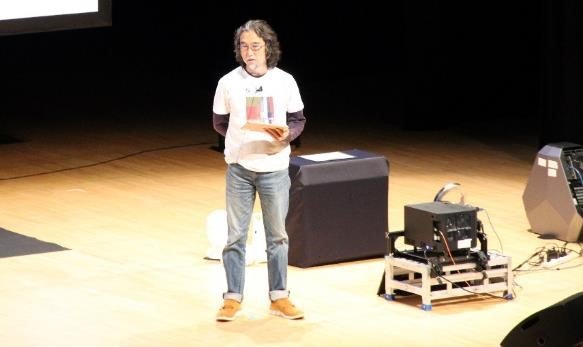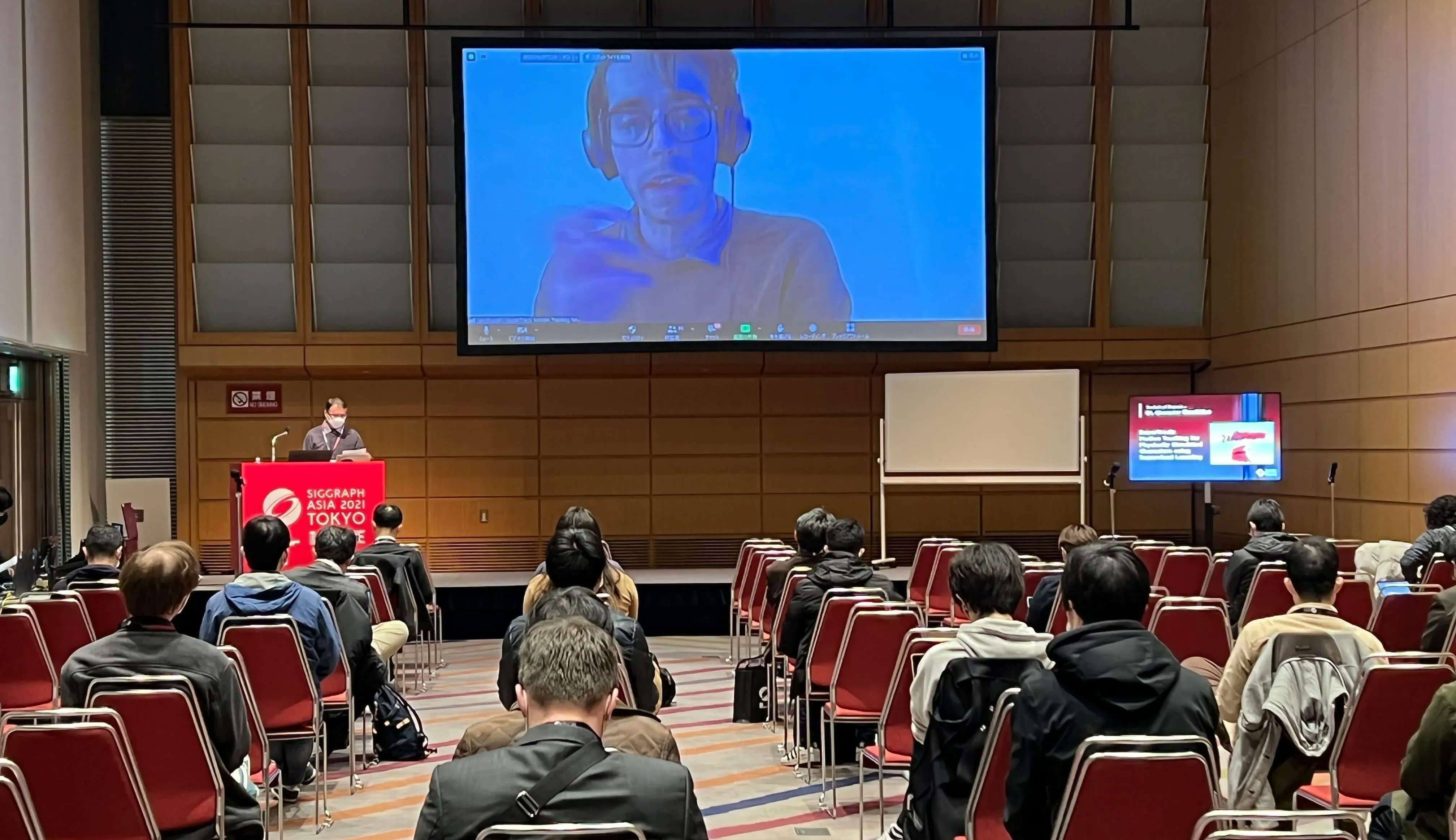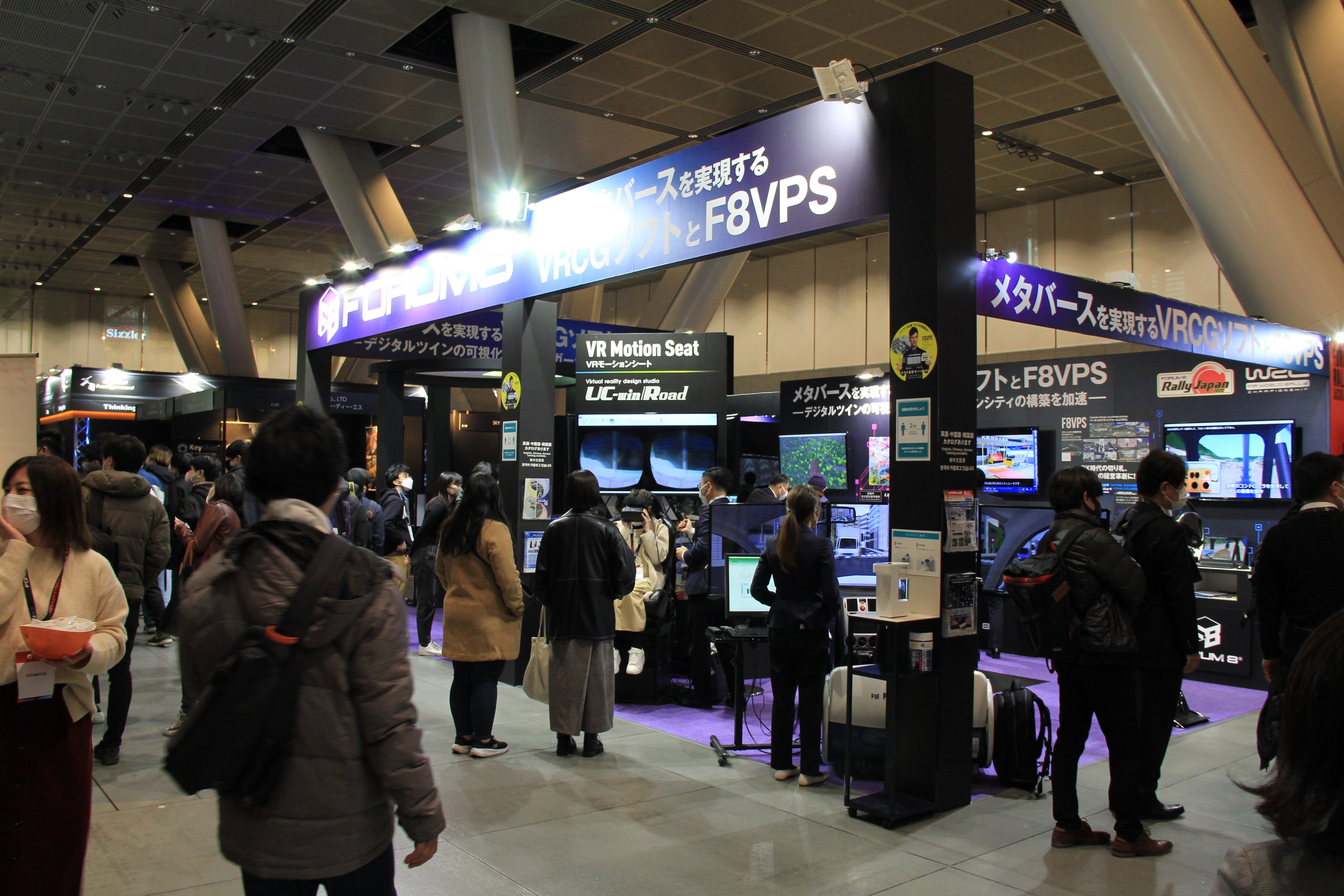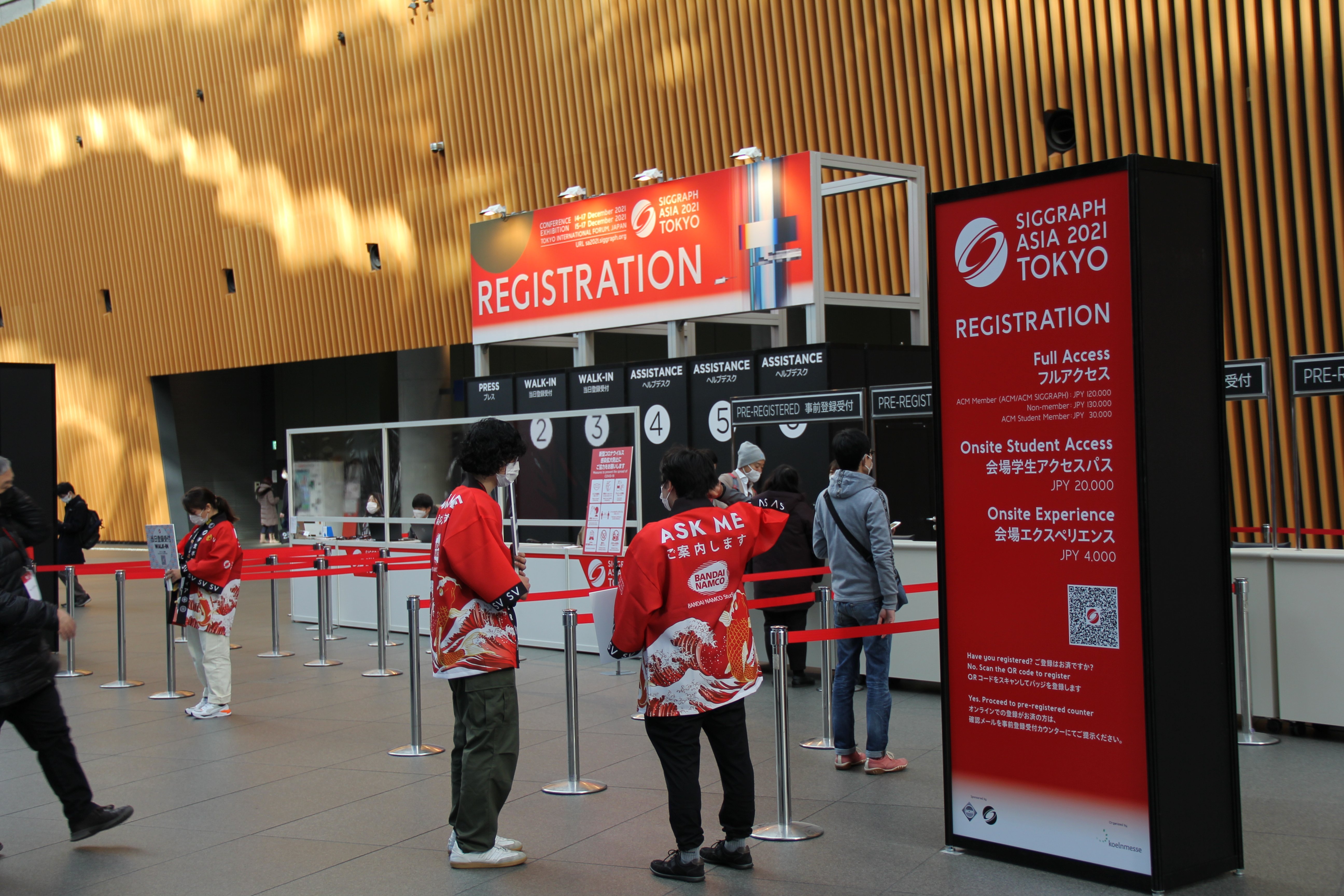SIGGRAPH Asia 2021 Successfully Held for the First time in a Hybrid Format Showing the Value of In-person Events
SIGGRAPH Asia 2021, the 14th ACM SIGGRAPH Conference and Exhibition on computer graphics and interactive techniques in Asia, returned to Tokyo and was held from December 14-17 in a hybrid format. At the Tokyo International Forum, people from around Japan attended in-person, and attendees from 41 countries tuned into virtual events online, with about 4,400 participants in total.
There was a variety of keynotes and sessions held both in person and virtually by leading people in the industry, who shared their experience and expertise in numerous areas related to computer graphics and interactive techniques. In the lively exhibition hall, in-person attendees could observe and touch many of these technologies firsthand at the booths of influential companies, universities, and other organizations in the industry. There was everything from VR headsets to realistic driving simulators to live 3D drawing performances.
Interview with the Conference Chair
On the last day, as the exciting event came to a close, we had the chance to interview the Conference Chair and CEO of Polygon Pictures Inc, Mr. Shuzo John Shiota.
The conference has come to a successful conclusion. Please share with us your honest impressions.

I want to express my gratitude to everyone that helped make SIGGRAPH Asia 2021 happen. In the future, my opinion is that SIGGRAPH will continue to be held as a hybrid event, and I am confident that we achieved a showcase for what a hybrid event can be. We took all the appropriate infection prevention measures and held our event safely.
After being held online the last three times in Asia and North America, this year's hybrid event will act as a template as to what to do online and what to do in person in the future.
Specifically, what should be done in person?

Although the exchange of information can be conducted online, in-person meetings are essential for the discussion and debate needed to spark innovation and inspiration among attending participants. This year's program included Bird of a Feather which aimed to stimulate discussion and discourse. There were Japanese explanations on the submitted papers which led to the lively exchange of ideas that strengthened the SIGGRAPH community and received excellent feedback from the participants.
What was your impression of the spectacular exhibition?
We also held a Students Meet Up event at the exhibition site. It was a casual event connecting companies and students, dispensing with the formalities of a conventional job fair. I believe this was a uniquely in-person event that could not be simulated online. As we could not hold a reception this year, we replaced it with a happy hour where participants could meet up randomly. It provided in-person participants with fantastic networking opportunities.
What are the challenges of hybrids?
When we held the event in Tokyo in 2018, we had about 10,000 visitors, but this time we had about 1,400 online and over 3,000 in-person participants, for a total of about 4,400. One of the challenges is to review the registration categories. There were not enough participants with the full conference pass this time, and thus Hall C, the main conference venue, did not attract enough people. There is no doubt that we will see more hybrid events in the future, so we need to determine why people attend on-site events. It may be effective to split the in-person event into smaller halls and conference rooms.
What were the challenges of the Japanese Border Closure?
Due to the sudden border closer, staff from Singapore could not attend in person, which caused many challenges. The registration system was also exclusively designed and managed in Singapore, meaning it could not be fully operated by onsite staff, and names could not be printed on event passes. From within Japan, staff was recruited at the last minute to make up for personnel shortages. To overcome such issues as they arose, staff in Japan communicated with the team in Singapore via WhatsApp during the four-day event, allowing us to run SIGGRAPH Asia 2021 smoothly and without incident. Our highly motivated volunteers mostly managed the conference and exhibition, a system unique to SIGGRAPH. There were only 50 volunteers this year in sharp comparison to the 2018 event's 300. Therefore, the volunteers dispatched from Tokyo Convention & Visitors Bureau (TCVB) were extremely helpful, allowing us to deliver the best event possible for all attendees.
How was Tokyo as your conference destination?
Tokyo was the perfect destination for SIGGRAPH. It is a popular destination in the SIGGRAPH community, and many overseas participants were disappointed they could not attend as, for them, visiting Tokyo is a spectacular event in itself. As one of the world's biggest cities, Tokyo offers an extraordinary mixture of culture, food, and fashion among other things, and is famous for its unmatched hospitality. I want to express my thanks to TCVB for their invaluable support during the preparation and running of the event and to the Tokyo Metropolitan Government for their financial and in-kind support.
SIGGRAPH is pursuing technologies to realize Virtual Reality. What direction do you think SIGGRAPH will take in terms of the "Metaverse" and in-person conferences?
SIGGRAPH Asia should aim to create a fully interactive "Metaverse" more rapidly than other conferences. However, to create places and experiences within a "Metaverse," we must create a town. We cannot put this into practice without high fidelity, which requires massive and real-time computing capability as we are still waiting for the appropriate technology. Furthermore, we need to adapt to designing and communicating in a space not burdened with the law of physics, which in my opinion may be more challenging than technical obstacles. Even when we incorporate the "Metaverse," unique elements of the in-person experience are difficult to reproduce virtually. Therefore, we cannot dispense with in-person elements. I think the ratio will likely be 50:50 when the time comes.



